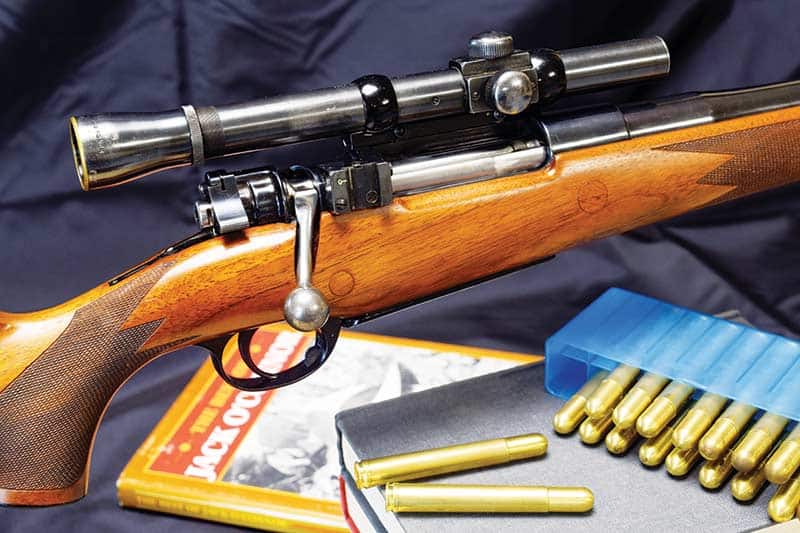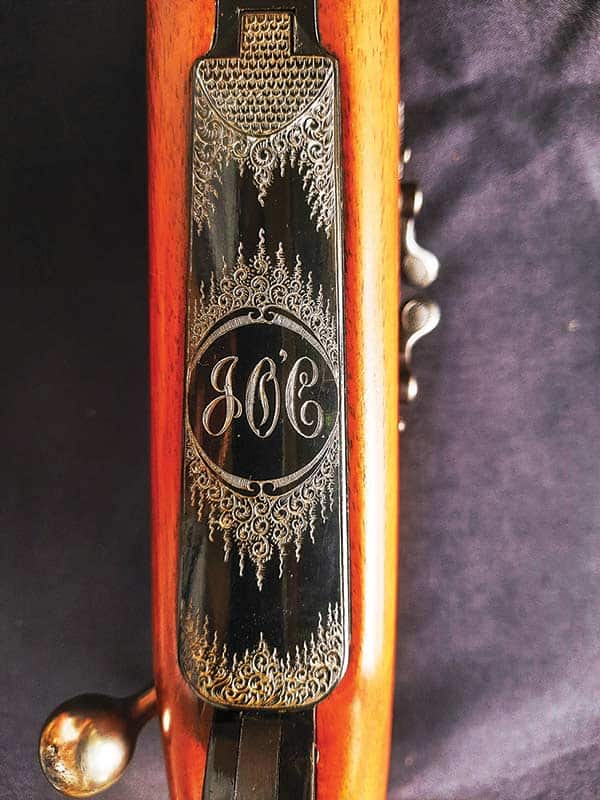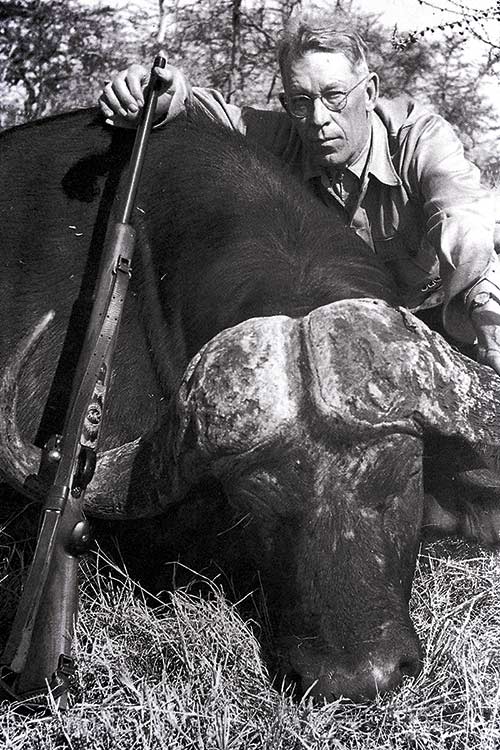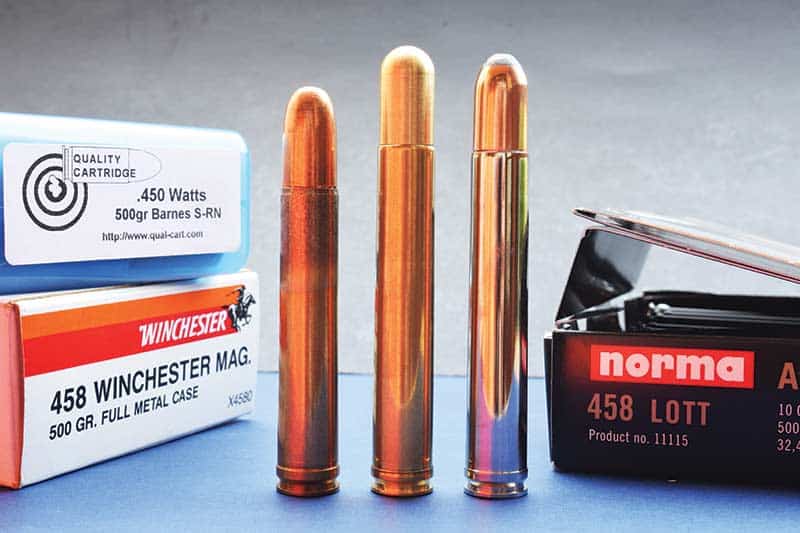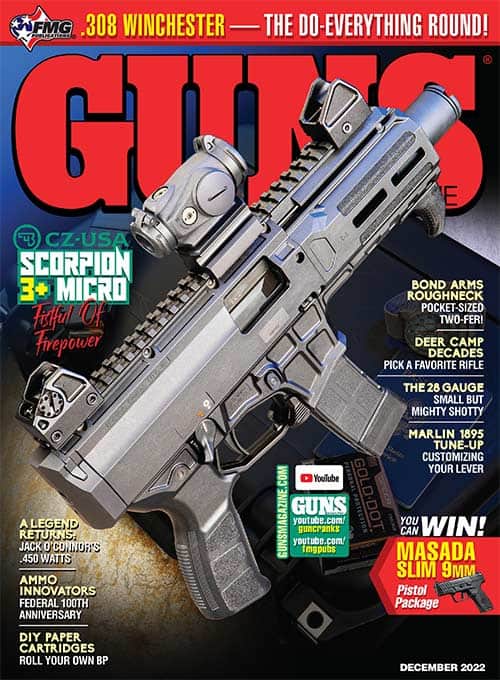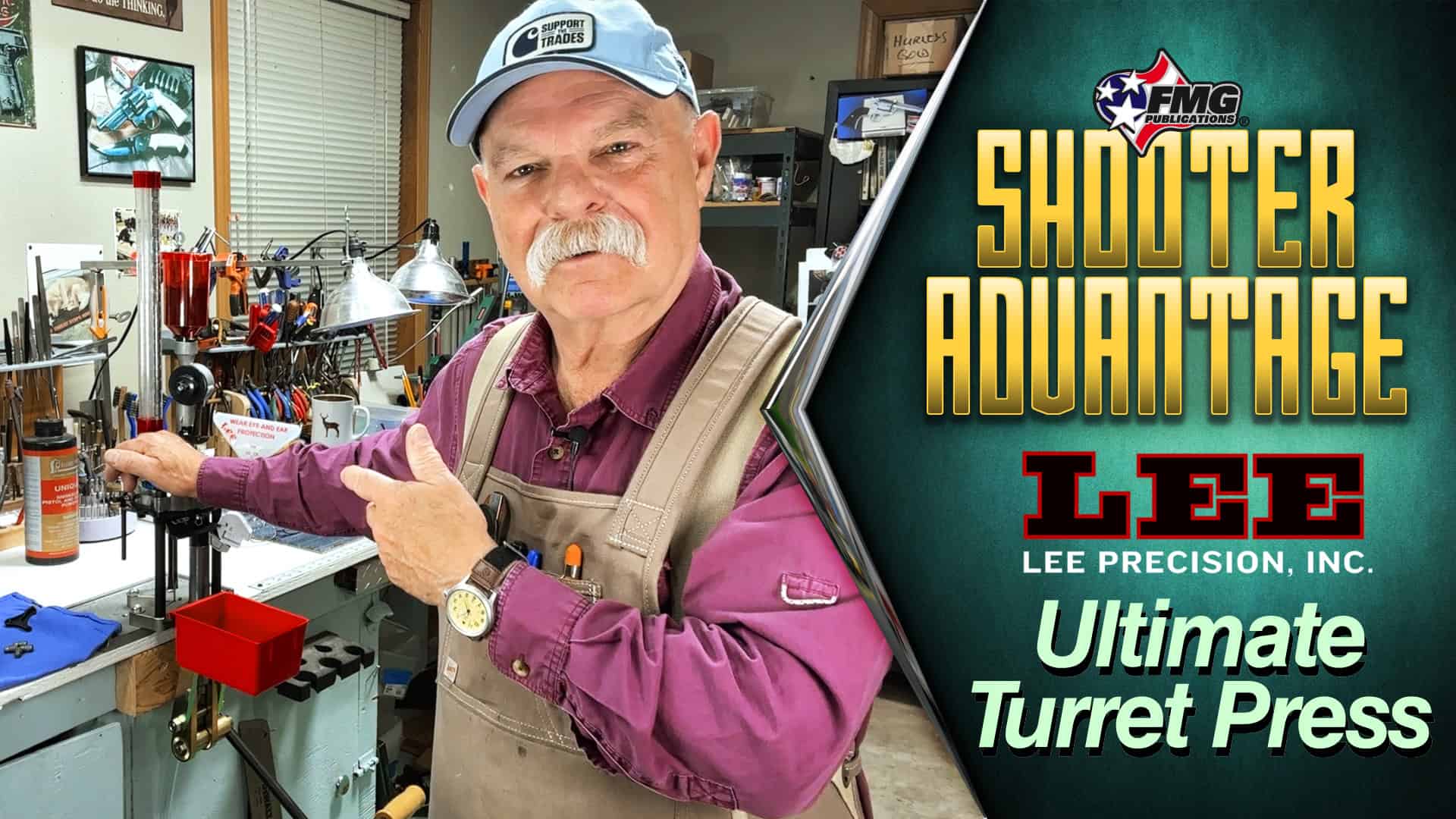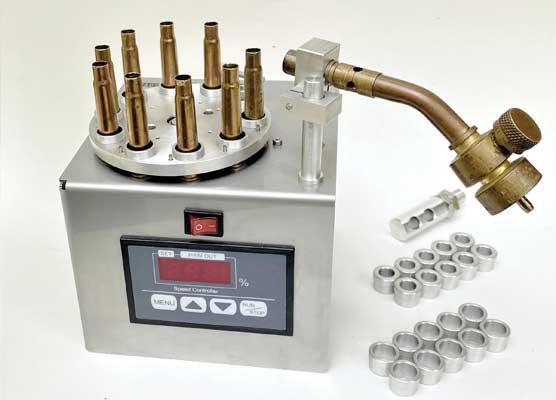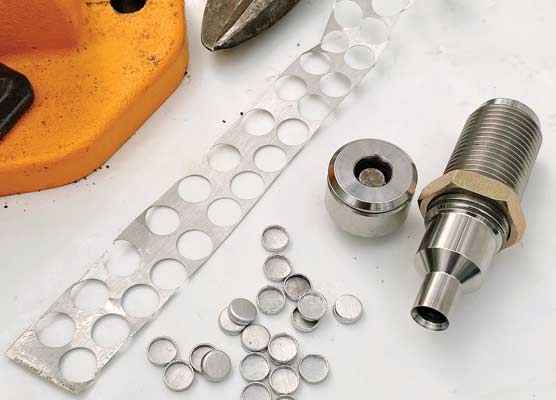Jack O'Connor's .450
Watts Comes Home
'Always Use Solids For Buffs'
“They buried the boots and the feet.” It was all they could find of the man, reported Don Ker. The buffalo had wiped the earth with the rest of him, until there was nothing left but stained soil. “Always use solids for buffs.”
It was an unnecessary caution to Jack O’Connor, after m’bogo had shed the effects of his softnose to seek revenge. The tale “Buffaloes Shoot Back!” would appear in the January 1954 issue of Outdoor Life magazine.
Don Ker, of the famous outfitting firm Ker & Downey, was guiding Jack with Herb Klein and Red Early, on a two-month safari in the summer of ’53. They’d disembarked at Nairobi and driven south into Tanganyika, toward the Simiyu River.
The buffalo was spotted from the safari car as “a great black object” in grass and thorn on a low hill. Don saw it too, and was impressed. He motored on, so as not to disturb it.
As buffalo landed just below lion on Jack’s list, he’d secured a suitable rifle in .450 Watts. Winchester had yet to unveil its .458, so this was a custom project coming together in Washington state. Tom Burgess of Spokane had opened an 1898 Mauser action for the long cartridge and “fitted a Holland & Holland floor plate, magazine and trigger guard….” Harvey Anderson chambered and installed the barrel in his Yakima shop, slotting the muzzle to tame recoil. Clarkston’s Albin Oslin made a “good, strong” eminently shootable stock of plain walnut with cross-bolts book-ending the magazine. A Jaeger trigger, Lyman receiver sight and 2 ½x Lyman Alaskan in Griffin & Howe’s QD rings completed the package.
Wildcats
The .450 Watts was reportedly developed in 1948 by James Watts, a schoolteacher and big game hunter. An Alaska resident after 1936, he refined its design with Harvey Anderson, who built rifles for it on ’98 Mauser and 1917 Enfield actions. Watts took a rifle in .450 to Rhodesia and shot heavy beasts with it. O’Connor’s use of the cartridge gave it more exposure.
Unlike the .450 Ackley, the .450 Watts is not straightened or necked with a slight shoulder. It is most like the .458 Lott, inspired in 1959 when a buffalo ignored the persuasion of the new .458 Winchester Magnum and gave Jack Lott a toss. The Winchester, on a .375 H&H hull cut to 2.50″ to fit standard rifle actions, holds much less fuel than the Lott’s 2.80″ case and hurls 500-grain bullets about 200 fps slower. On some charts, the .450 Watts and .458 Ackley, both wildcats, trump the Lott, SAAMI-approved in 1995. But wildcatters can be optimistic and aren’t held to pressure ceilings. P.O. Ackley lists velocities of 2,470 fps for the Watts and Ackley, with 500-grain bullets driven by 90 grains of IMR 3031 — and even higher speeds with 95 to 98 grains 4320. But these are frothy loads. In sum, the .450 Watts, .458 Lott and .458 Ackley all land a harder blow than the .458 Winchester and the 450- to 475-caliber British double-rifle rounds to which it’s compared.
O’Connor wrote the .450 Watts cartridges he used were made from .375 H&H hulls run into a .450 Watts die, then loaded with 82 grains of No. 4895 powder and 480-grain bullets developed for the .450 Nitro Express. With a muzzle velocity of 2,175 fps, they carried 5,050 ft-lbs of energy — a ballistic match for “the great .470 Nitro Express, Africa’s favorite game cartridge, which uses a 500-grain bullet [at 2,125 fps], with 5,030 ft-lbs of energy.”
Impressive energy. But the buffalo had looked very big.
A kilometer past the animal, Don stopped the car and grabbed his .475 double as Jack thumbed the big .450s into his Mauser. They sneaked back through the bush. The buffalo was still there, no doubt waiting, speculated O’Connor, “to toss and pound an innocent dude hunter.”
The hunters had inched well within iron-sight range when a shot alley opened. The bull was lying down, quartering off. Kneeling, Jack steadied the sight in the aperture. The big Kynoch’s impact behind the shoulder “almost turned the buffalo over.” The animal slumped forward.
“Again,” Don directed. Jack sent another. And again the great body rocked. Looking down to top off the magazine, O’Connor had his thumb on the stack when suddenly the beast rose. “Then he lowered his head and came for us.” The two rifles thundered at once. The bull turned, staggered a few feet, and as the .450 fired once more, piled up. Jack’s first softnose had struck as intended, high in the lungs. It had flattened on the spine.
“The buffalo is genuinely a tough character,” wrote O’Connor. “Among the professional hunters of British East Arica, it is generally agreed that [a young hunter is lucky] to get knocked down and kicked about a bit early in his career by a buffalo.” Caution follows.
After this safari, the .450 Watts rifle gave way to others in Jack’s writing and sometime after the 1953 hunt in Tanganyika, O’Connor parted ways with his Watts.
Home Base
Jack and Eleanor and their four children had moved to Lewiston, Idaho in 1948. Their house on Prospect Avenue would be their last. Jack died in 1978, Eleanor a few months later. In 2006, the Jack O’Connor Hunting Heritage and Education Center was established nearby, overlooking the Snake River in Hells Gate State Park on Lewiston’s southwest hem. The Center’s mission, inspired by its namesake’s career, was to extend his vision of hunting, writing and conservation to future generations. The museum displays 65 of his hunting trophies, also several O’Connor firearms: his Biesen-stocked “Number Two” .270, his favorite .30-06, Eleanor’s 7×57 and others.
This past June, the .450 Watts that had accompanied Jack on safari 69 years ago turned up at the Center’s annual fundraising event.
Homecoming
“I came by it incidentally,” said Dr. Jim Stiehl, whom I met during the gun show kicking off the weekend. Jim had traveled from his Illinois home to attend. “In 2003 a South African colleague I had worked beside in Zurich asked me to take delivery of a .318 Rigby he had bought from a man in Idaho. So I phoned the seller to arrange shipment. With more African hunts in mind, I asked if he had any big-bore rifles to peddle. He told me of one that might have been O’Connor’s. I wasn’t looking for anything that special; besides, how would I verify its provenance? But the price was right. Imagine my surprise when the rifle arrived! The floorplate was boldly engraved JO’C!”
So began Stiehl’s search through for a description and photo of the rifle. He found both. Buck Buckner, one of the Center’s founders and an authority on the writer, had thoroughly described the rifle in a 2002 Safari Press book, Jack O’Connor, by Robert Anderson. Also, there were photographs of Jack with the rifle and his buffalo in the 1954 magazine article and in the book Jack O’Connor’s Big Game Hunts (Outdoor Life and E.P. Dutton, 1963).
But Stiehl wouldn’t learn of the Center for another decade. Meanwhile, O’Connor enthusiast Lou Scharbau had taken the trail of the .450. Jack’s son Bradford, who lives not far from Scharbau in western Washington, referred him to Buckner. Buck had Dr. Stiehl’s name in his notes but an outdated address. In March 2019, after years of diligent sleuthing, Scharbau was on the phone with Stiehl, who confirmed he had the rifle. Immediately, Scharbau invited the retired surgeon to the Center. Two years of interrupted travel delayed the visit.
“I haven’t hunted with it,” Jim Stiehl said, unzipping the case. “It has value beyond utility.” Then, with a grin: “It’s home now.” And so he donated it to the Jack O’Connor Center, along with two boxes of Watts loads from Quality Cartridge in Hollywood, Maryland. “I’ve fired it,” he continued, handing me the rifle, “but only at the range, with modest loads. It shoots quite comfortably for a rifle so powerful!”
The .450 comes to cheek naturally. Fine balance, a straight comb and a slim wrist brings it alive in hand. The barrel’s heft steadies it. The Alaskan’s post reticle came instantly to eye. Flipping the G&H tabs and sliding off the scope, I slipped the Lyman stem and aperture into the rear sight base, a switch taking but seconds.
Jim Stiehl owns and uses other rifles. He could have carried this one afield. Instead, he preserved its fine condition. His generous donation brings to the Jack O’Connor Center not just a vintage post-war custom rifle but a slice of history.
Once, when Tanzania was Tanganyika, and hunters plied British East Africa on two-month safaris, this .450 helped the pre-eminent gun writer of his day stop “a big, square-built, blocky, low-slung animal, as black as sin,” coming very fast!
To learn more about the Jack O’Connor Hunting Heritage & Education Center, visit jack-oconnor.org or phone 208-743-0543.
